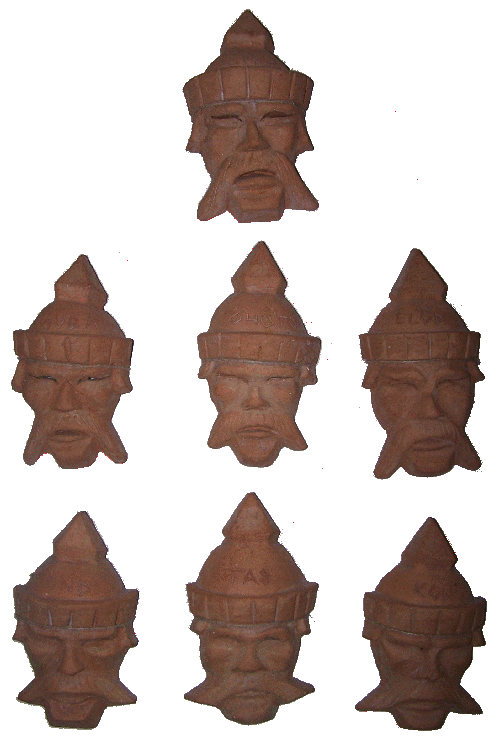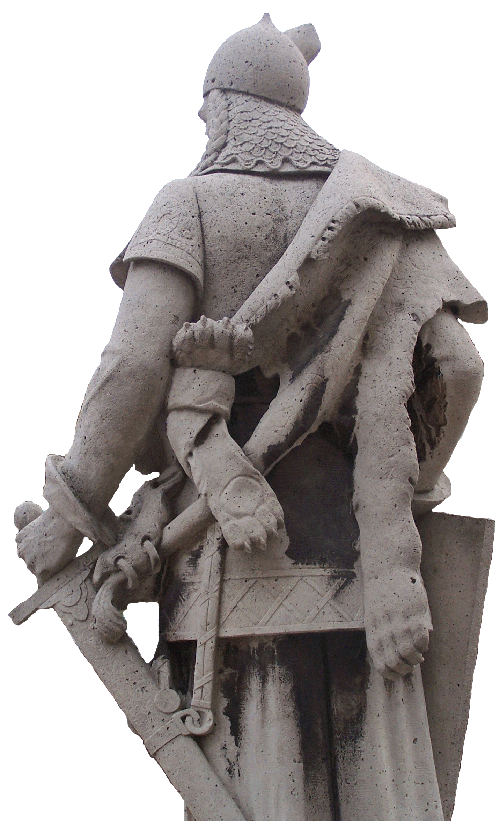

Geula the old (also Gyyla, Jula) - mentioned by the Hungarian Gestas - a ruler (dux magnus et potens) in Transylvania during the middle of the 10th century. Gylas is identified by some historians with Geula the old from the Hungarian Gestas (see below). The metropolis (diocese) of Tourkias was centered at Bács in today's Hungary. Gylas constructed a Basilica, and received missionaries in his domains along the river Tisza. According to De Administrando Imperio, Tourkias was bordered by the Cris river in the east, and laid a distance of four days from Patzinakia, which had its western limits on the Eastern Carpathian mountains. He was accompanied on his way back by a Greek Orthodox monk named Hierotheus who had been ordained Metropolitan of Tourkias (the name for Hungary employed by the Byzantines). Gylas - mentioned in De Administrando Imperio - a 'Tourk' (the name for Magyars used in the chronicle) chieftain who was baptised as an Orthodox Christian in Constantinople, probably in 953, and received the title of patricius. Romanian authors consider them to have been the names of persons with a possible proto-Romanian descent: The following persons mentioned in the Hungarian Gestas and De Administrando Imperio are considered by Hungarian historians as an erroneous interpretation of the title gyula by the chroniclers. The word gyula, like other ancient Magyar titles, was not used after the establishment of the Kingdom of Hungary. It is possible that during the 10th century some of the holders of the title of gyula also used Gyula as a personal name, but the issue has been confused because the chronicler of one of the most important primary sources (the Gesta Hungarorum) has been shown to have used titles or even names of places as personal names in some cases. The title gyula is sometimes translated into English as duke, which is not entirely equivalent as Hungary at this time was still a tribal society based on kinship ties, rather than a feudal society. The gyula and the horka a held a rank in Hungarian society second only to the fejedelem (ruling prince), and slightly above the rank of úr which was used to refer to the other tribal chieftains, who each ruled as prince in their own domain. The word gyula was used as the title of the semi-indepedendent rulers of Transylvania during the 10th century. After having secured the succession for his son Zoltán, he conferred the office of gyula on another tribal chief. Kurszán was killed during a raid in 904 and Árpád became the sole ruler of the nation. At the time of the settlement in the Pannonian plain, the kende was Kurszán while the gyula was Álmos and then his son Árpád. This kind of dual leadership was usual in the Khazar Empire of which the Magyar tribes were earlier subjects. While the former was the nominal leader, the latter was the chief warlord or military commander. Under the system of dual kingship which the Magyars used in the 9th century, the two kings of the tribal confederation were the kende (or kündü) and the gyula. It is the Hungarian form of an originally Turkic title which entered the Hungarian language at some point before 950 CE. This title was mentioned by Arabic chroniclers such as Ibn Rusta, by the Persian historian and geographer Gardizi and also in the annals of the monastery at Altaich. It was revived in the 19th century and is often associated with the Latin name Julius.Ī gyula is a Magyar leader. It was adopted as a given name sometime after the establishment of the Kingdom of Hungary.
Het magyar vezer free#
Wiktionary, the free dictionary.Gyula is a Hungarian male given name. Wikipedia articles All pages beginning with Gyula

Notes about Prokuj (Gyula) Erdélyi - of Transylvania ks. These hotels may also be interesting for you.Sarolt - Sarolta of Transylvania Transylvania ± 957-± 997

Show more Interesting hotels nearby Balaton H458 Balaton H458 Nearby attractions include Magyar Honvédség Hévízi Mozgásszervi Rehabilitációs Intézet, Fonyódliget, Keszthely Downtown, Westernpark Nemesvita, Hévíz City Hall, Tapolca downtown, Steamboat at Lake Balaton, Majtényi Restaurant


 0 kommentar(er)
0 kommentar(er)
